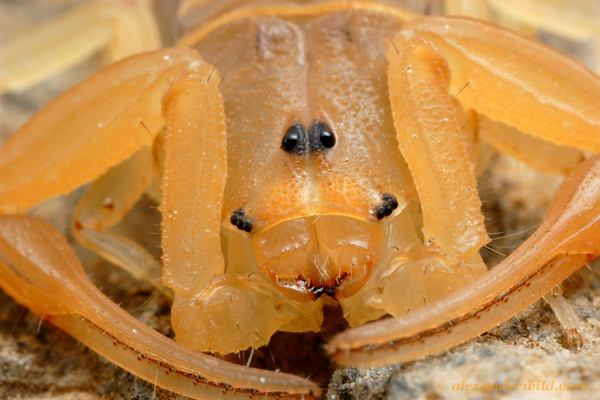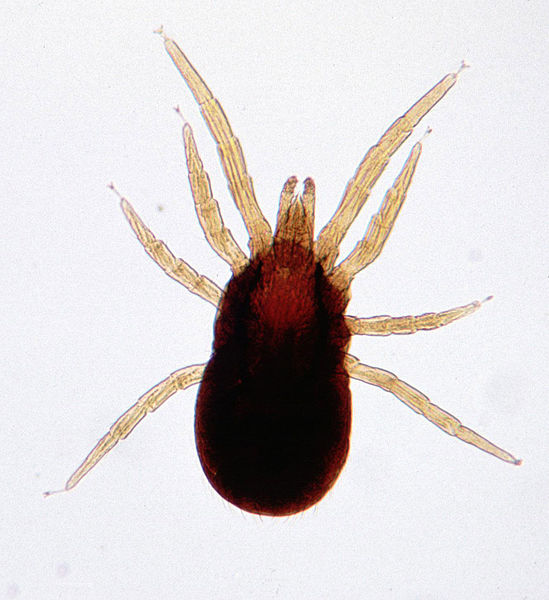Classification
Overview
Scorpions are closely related to other organisms in the phylum Arthropoda such as spiders like Salticus scenicus, ticks, and mites. Scorpions are characterized by having an exoskeleton, four pairs of appendages used for walking, one pair of appendages used for grasping prey, one pair of mouth-appendages for grabbing food, two distinct body regions, and a long tail with a venomous stinger. There are around 1,500 known species of scorpions with thousands more to be discovered
Spider Tick Mite
Photo credit Wikimedia Commons Photo credit Alfried H. Photo credit Alan R. Walker
Common Mix-ups
Sometimes the common names given to organisms can cause misunderstandings when referring back to their scientific names. Sometimes one species of an organism can have multiple, different common names. Also, more than one type of species of organisms can have the same common name too. The scientific naming system is a binomial system, which means each organism is given a name with two parts. The two parts to the name are the genus and species of each organism. An example of this is Nepa cinerea, which is commonly called a water scorpion. The water scorpion is in fact not a scorpion at all though. It is an insect that falls under the phylum Arthropoda, which is the same as scorpions, but it is not a scorpion
Centruroides sculpturatus Nepa cinerea
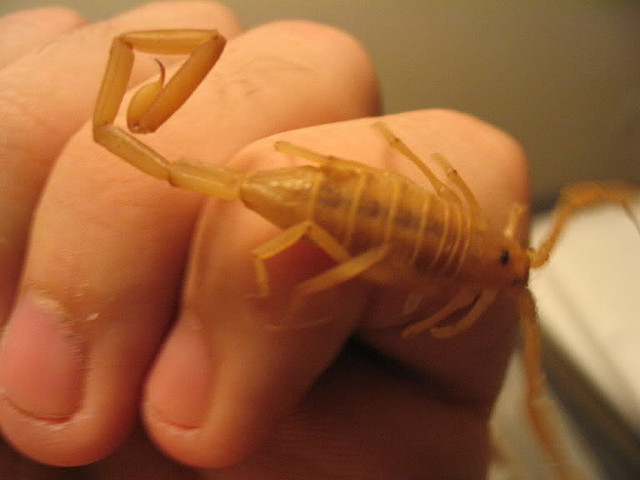
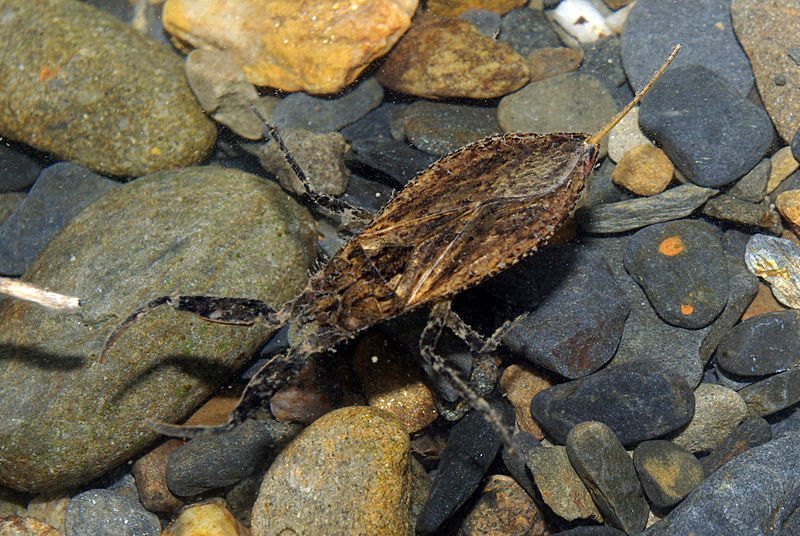
Photo credit Flickr.com Photo credit David Perez
Taxonomy:
Domain - Eukarya
Kingdom - Animalia
Phylum - Arthropoda
Class - Arachnida
Order - Scorpiones
Family - Buthidae
Genus - Centruroides
Species - Centruroides sculpturatus

The above phylogenetic tree shows the various orders that branch from the class Arachnida. Arachnida is found within the phylum Arthropoda, which is found within the kingdom Animalia. This was re-drawn from Morphin Arachnids - Using Phylogenies for Time Travel, 2008.
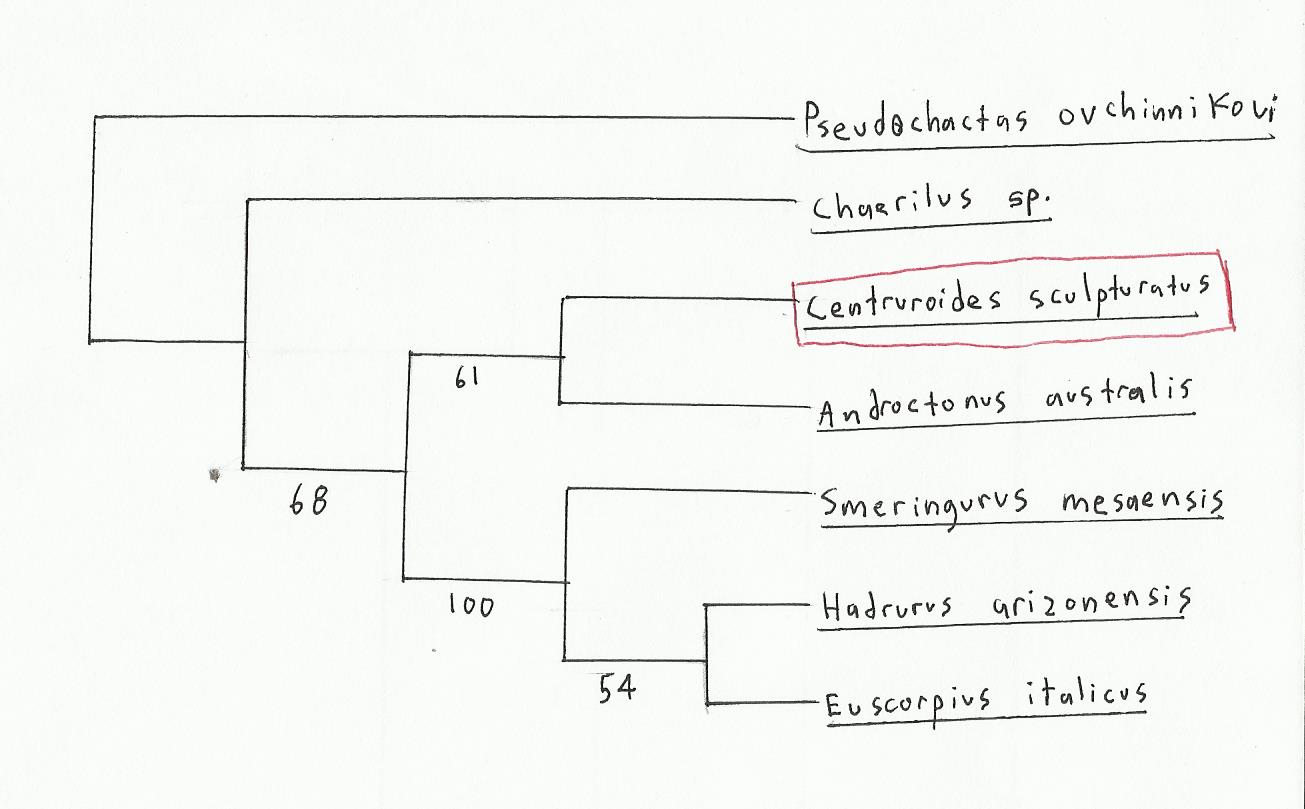
The above phylogenetic tree shows seven taxa and is based on 18S mtDNA sequences. This was re-drawn from Soleglad & Fet: Phylogeny of the Extant Scorpions, 2003.
Explanations for each level:
Eukarya: The Arizona Bark Scorpion belongs to the domain Eukarya because it has eukaryotic cells, which contain a nucleus and true membrane bound organelles. There are many organisms that are related to the Arizona Bark Scorpion within this domain that you might not expect. Some examples are Ananas comosus, otherwise known as pineapple, Cyanae capillata or the Lion's Mane Jellyfish, and Psilocybe cubensis, which is known as the Magic Mushroom
Animalia: This scorpion is put in the kingdom Animalia because it is multicellular, it is heterotrophic which means it cannot synthesize its own food, it has cells that show specialization, and it reproduces sexually. Examples of other organisms in this kingdom are Gallus gallus or a chicken, and Sistrurus miliarius, the Southeaster Pygmy Rattlesnake
Arthropoda: It belongs in the phylum Arthropoda because it shows bilateral symmetry, has tissues, has a coelom, possess a chitinous exoskeleton, has a segmented body, and has paired, jointed appendages. Trombidium grandissimum, commonly known as the Giant Red Velvet Mite, is an example of another organism within this phylum
Arachnida: This scorpion is in the class Arachnida because it is divided in to a cephalothorax and an abdomen, has four pairs of legs, lacks antennae, and has compound eyes. The Sydney Funnel-Web Spider, or Atrax robustus, is also an arachnid
Scorpiones: It is in the order Scorpiones because is has a pair of claws called pedipalps and a segmented tail with a venomous stinger
Buthidae: It belongs to the family Buthidae because it has a thick, strong tail, weaker pedipalps, color variation of yellow and brown, and several species are highly toxic
Centruroides: The English translation for Centruroides has three meanings: Centr means "pointed", Ur means "tail", and Oides means "the form of". The Arizona Bark Scorpion is included in this genus because it has well developed pedal spurs and has a small basal thorn
Centruroides sculpturatus: The English translation for sculpturatus means "of or belonging to sculpture", which refers to the sculpted look of the scorpions dorsal plates called tergites
Next, find out about the habitat of C. sculpturatus!
Get back to the main page by clicking here!
